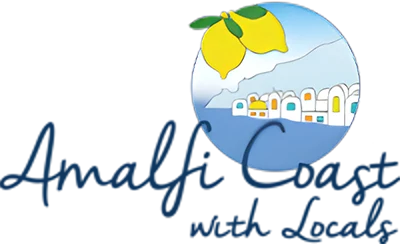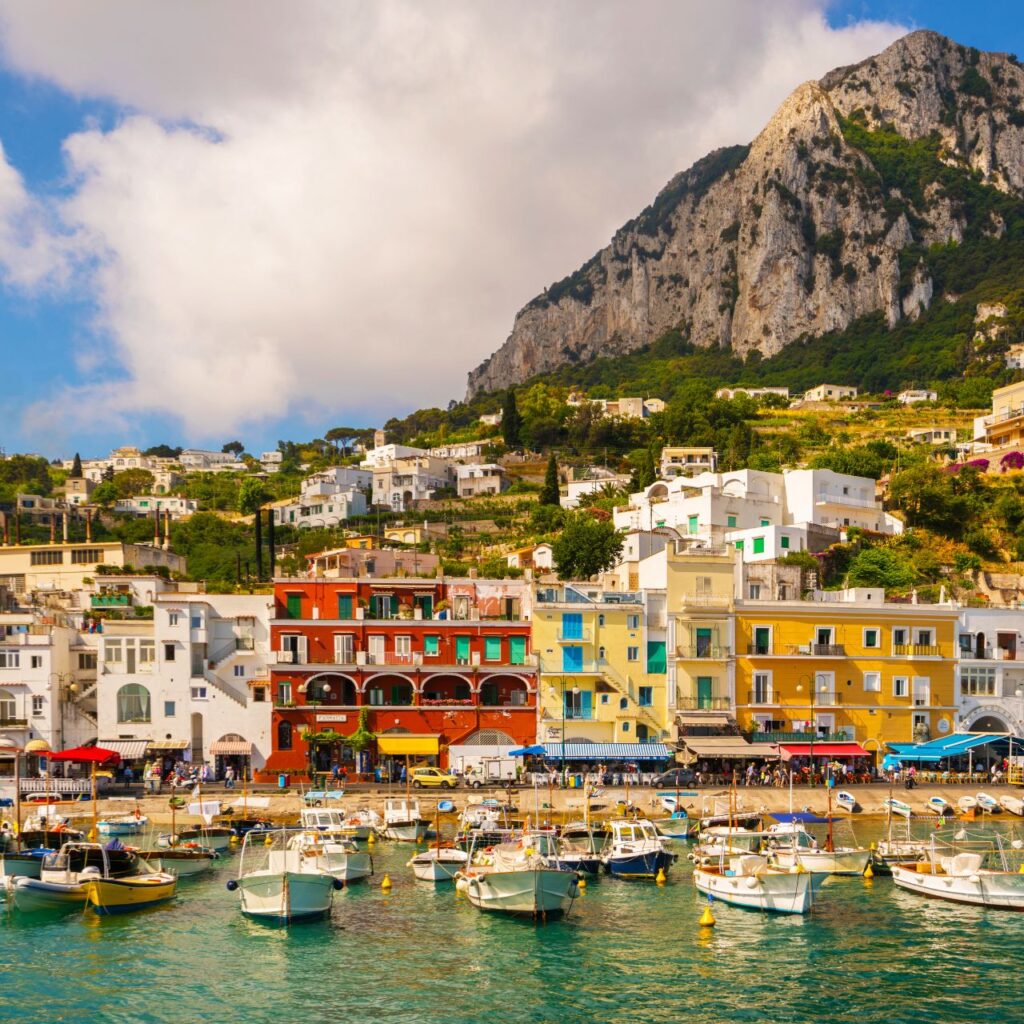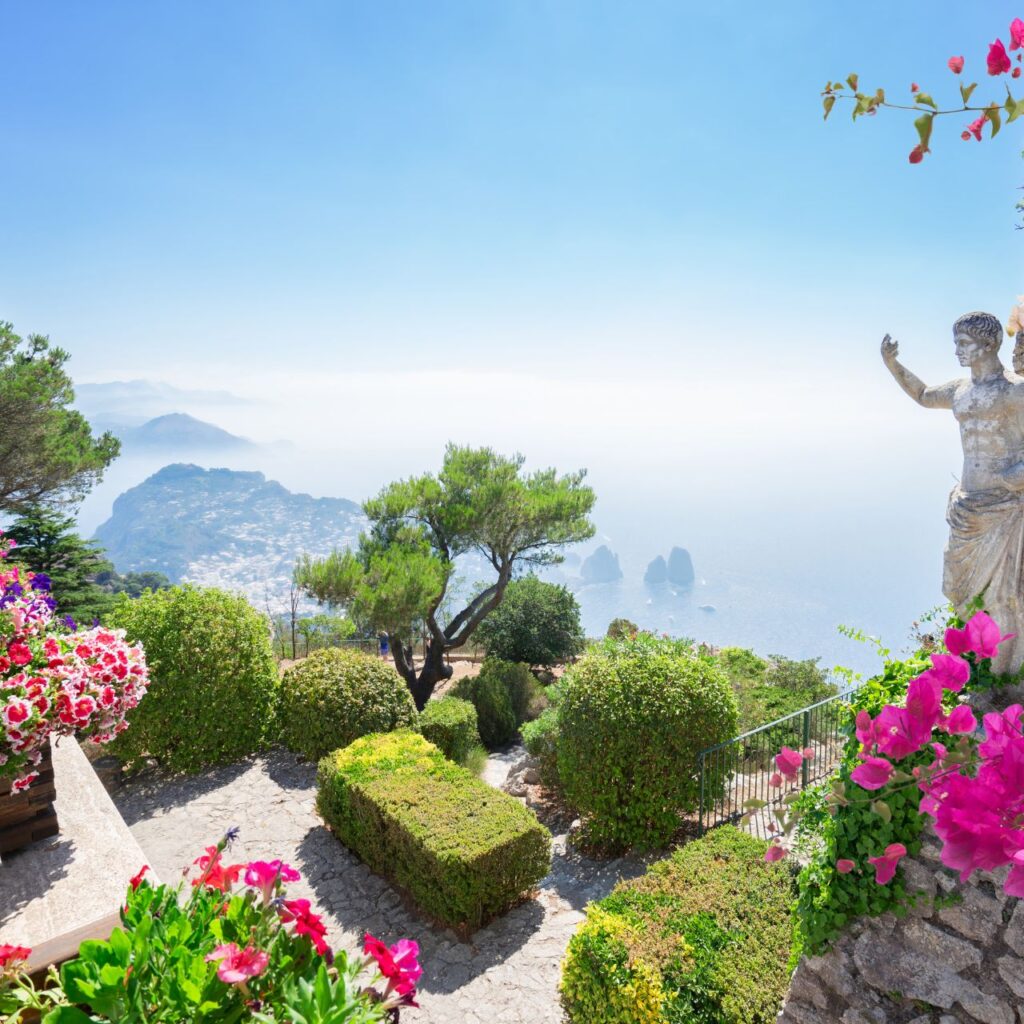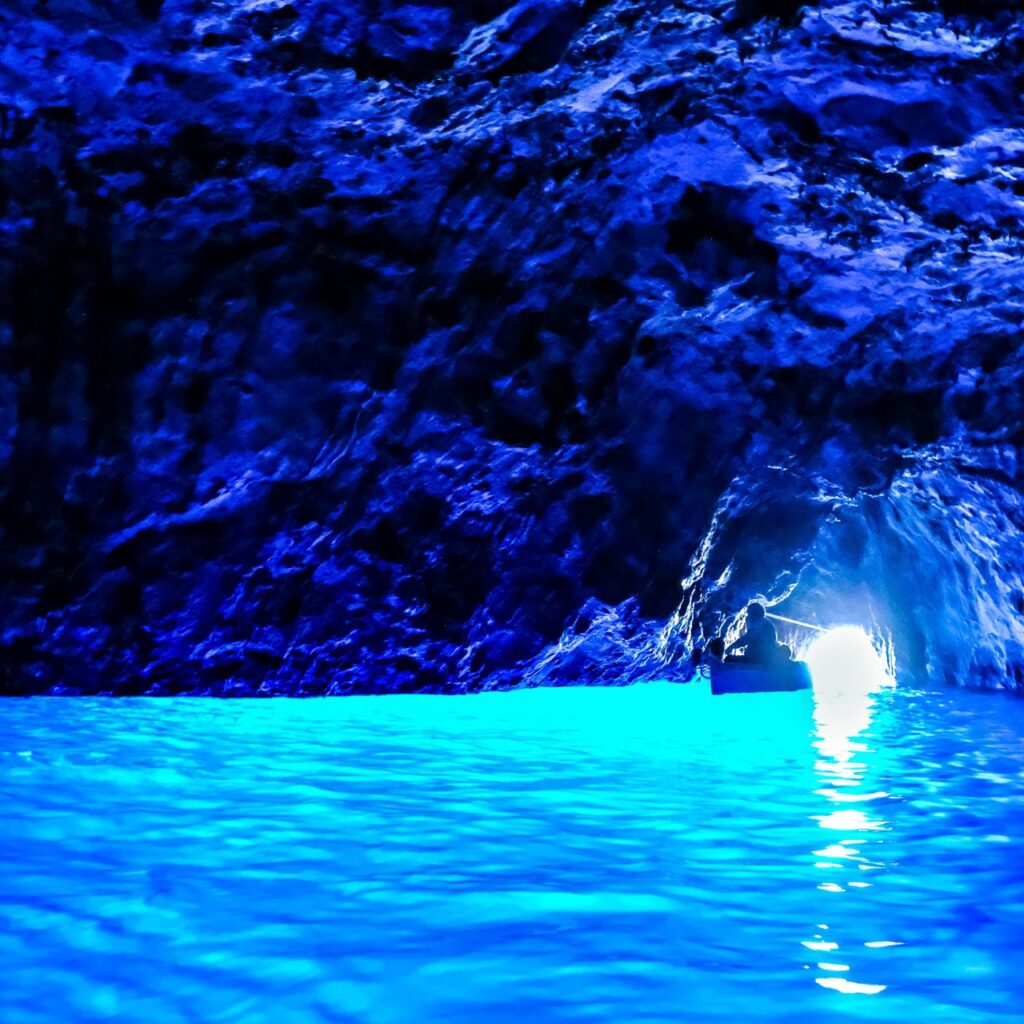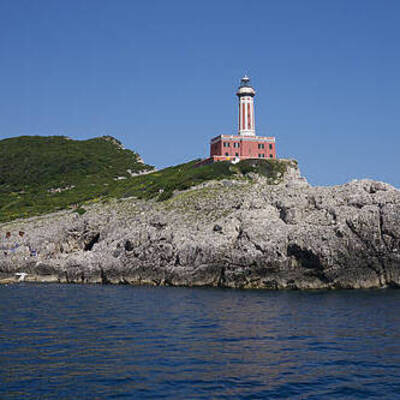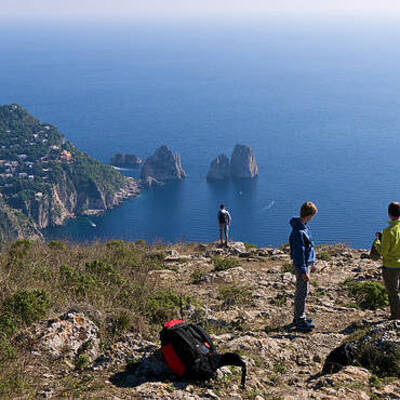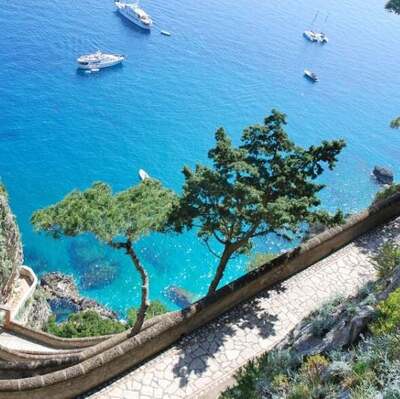The island of Capri consists of two municipalities, Capri and Anacapri.
The island of Capri is world-famous for its elegance and nightlife among the streets of the center and piazzetta. The splendid and opulent historic hotels and the beautiful cliffs, caves and walks along the hiking trails are to be regarded as Capri’s calling card, offering a sought-after and high-quality tourism. In reality, the island of Capri hides many other treasures. Let’s discover them together with our tours!
The small town consists of a melting pot of streets and steep stairways, where time seems to stand still.
Anacapri characteristic village overlooking the sea, a destination for thousands of tourists throughout the year, offers surprises around every corner! The small town consists of a melting pot of streets and steep stairways, where time seems to stand still. Among the most interesting buildings to visit in Anacapri is the Villa San Michele, built in the late 1800s by Swedish writer and physician Axel Munthe.
After his death the villa was donated to the Swedish state and to this day it is owned by a Swedish foundation that has turned it into a museum and organizes classical and chamber music concerts there during the summer.
Anacapri, or Capri di sopra, as the Greeks had nicknamed it. This beautiful village, which today constitutes a municipality in its own right, is an integral part of the island. Inhabited since Roman times, as evidenced by numerous remains, Anacapri had its heyday between the nineteenth and twentieth centuries, when it became a coveted “buen retiro” for artists from all over Europe, who came here to spend happy vacations and find inspiration.
One of the most visited sights in Anacapri is the Blue Grotto, one of the island’s main attractions; it falls within the municipality of Anacapri and boasts so many visitors each year that it is the third most visited site in the entire Campania region, after the Ruins of Pompeii and the Royal Palace of Caserta.
The Blue Grotto was known since the time of the ancient Romans, who apparently used it as a natural swimming pool. In particular, it seems that Tiberius had a tunnel built to access the cave directly from his sumptuous villa.
Not to be missed
- Mount Solaro
- Villa San Michele
- Blue Grotto
- Monte Solaro chairlift
- Phoenician Staircase
- Trail of the Forts
- Lighthouse of Punta Carena
- Church of San Michele and Church of Santa Sofia
- Red House
- Villa of the Damecuta
